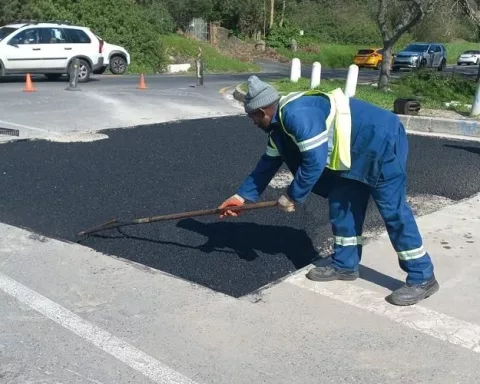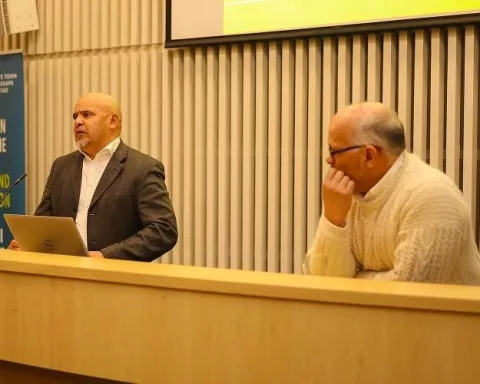The flooding in Khayelitsha and Cravenby was caused by neglected stormwater infrastructure and illegal dumping, resulting in dangerous living conditions for families. The Roads Infrastructure Management department and the community worked together to resolve the crisis, highlighting the importance of civic responsibility and maintaining urban areas. The impact of illegal dumping was significant, accumulating beneath the surface and posing health and economic risks. This serves as a lesson in the role each individual can play in improving living conditions for all inhabitants.
How did flooding in Khayelitsha and Cravenby occur?
The flooding in Khayelitsha and Cravenby resulted from obstructed stormwater infrastructure and illegal dumping. Neglected civic responsibilities allowed for dangerous living conditions for numerous families. However, the Roads Infrastructure Management department and the community worked together to resolve the crisis. This serves as a reminder of civic duty and the significance of maintaining urban areas.
Section 1: The Rising Waters and a Stark Realization
Greeted by dawn, the bustling avenues of Site C in Khayelitsha and Short Street in Cravenby often teem with steadfast resolve. However, one morning was different as Councillor Rob Quintas traversed the inundated streets, evaluating the havoc wreaked by floods during the recent weekend. This led him to a stark understanding: the flooding was not merely a force of nature, but rather a result of systematic negligence.
A significant part of the flooding in these structured communities was directly linked to obstructed stormwater infrastructure, resulting in drastic living conditions for numerous families. Khayelitsha bore the brunt of the damage with over 268 reported affected roads. The bitter truth of homes and streets submerged under water starkly reflected the repercussions of disregarded civic responsibilities. Nevertheless, the city’s service teams and the community diligently worked to resolve the crisis, exhibiting a deep sense of accountability and cooperation.
Section 2: The Task and Triumph of The Roads Infrastructure Management Department
Amid the deluge, the pivotal role of the City’s Roads Infrastructure Management department came to the forefront. They faced a barrage of flood-related concerns, ranging from mudslide incidents at Kommetjie’s Main Road to Corsair Way in Sun Valley. The caved-in embankment on the N1 near Jip De Jager required urgent attention. The provincial government, together with the City’s Law Enforcement, responded promptly to this challenge.
Simultaneously, rigorous assessments began in areas such as Philippi. Blocked drains, an often-neglected consequence of urbanization, significantly amplified the flooding risk, particularly in areas like Khayelitsha. The impact of illegal dumping in exacerbating this crisis was blatant. What seemed an innocent act resulted in a disaster impacting the entire community.
Section 3: The Perils of Illegal Dumping
From discarded builders rubble to plastic waste and even animal remains, these materials may disappear from sight but their harmful effects persist. They accumulate beneath the surface, persisting in the city’s stormwater infrastructure which leads to blockages, and consequently, flooding. In Cravenby and Khayelitsha, enormous amounts of plastic and other solid waste had to be removed from the system, painting a dismal picture of the extent of illegal dumping.
The fallout of this negligence is multifaceted. Communities are left trudging through knee-deep contaminated water, posing severe health risks. The economic impact is also substantial, as soaked roads sustain damage such as potholes and abraded surfaces. The subsequent cost of restoring this damage will necessitate considerable public funds. These are funds that could have been diverted to other essential services, thus amplifying the social and economic consequences of such disasters.
Section 4: The Lesson in Civic Responsibility
The visit by Councillor Quintas served as a poignant reminder of civic duty and the urgency for a collective initiative to report obstructions in stormwater infrastructure, illegal dumping, and potholes. The story of Khayelitsha and Cravenby is one of negligence but also one of tenacity and community solidarity. It is a lesson about the significant role each individual can play in maintaining our urban areas and improving the living conditions for all inhabitants.
1. How did flooding in Khayelitsha and Cravenby occur?
The flooding in Khayelitsha and Cravenby resulted from obstructed stormwater infrastructure and illegal dumping, resulting in dangerous living conditions for numerous families. Neglected civic responsibilities allowed for the accumulation of waste beneath the surface, posing health and economic risks.
2. What was the role of the Roads Infrastructure Management department during the flooding crisis?
The Roads Infrastructure Management department played a pivotal role in responding to the barrage of flood-related concerns, ranging from mudslide incidents to caved-in embankments. They also conducted rigorous assessments in areas like Philippi to identify blocked drains and other factors contributing to flooding.
3. How did illegal dumping impact the flooding crisis in Khayelitsha and Cravenby?
Illegal dumping significantly amplified the flooding risk in these communities, with enormous amounts of plastic and other solid waste having to be removed from the system. The accumulation of waste beneath the surface led to blockages, posing severe health risks and causing economic damage.
4. What are the consequences of neglecting civic responsibilities in urban areas?
Neglecting civic responsibilities can lead to dangerous living conditions and economic damage, with soaked roads sustaining damage such as potholes and abraded surfaces. The subsequent cost of restoring this damage requires considerable public funds that could have been diverted to other essential services.
5. What is the lesson to be learned from the Khayelitsha and Cravenby flooding crisis?
The flooding crisis in Khayelitsha and Cravenby serves as a lesson in the role each individual can play in improving living conditions for all inhabitants. It highlights the importance of civic responsibility and maintaining urban areas to prevent similar disasters from occurring in the future.
6. How can individuals contribute to preventing similar disasters in their communities?
Individuals can contribute to preventing similar disasters in their communities by reporting obstructions in stormwater infrastructure, illegal dumping, and potholes. This collective initiative can help maintain urban areas and improve living conditions for all inhabitants.












